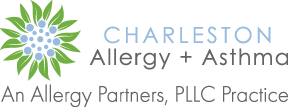The field of science is ever-changing with new discoveries and ideas about life and diseases. Scientific textbooks have become obsolete over past millennia and recently, as frequently as a decade or two! Our ideas about what causes various diseases and appropriate management have changed drastically over the last 500 years. Our team receives official updated recommendations for the treatment of our patients and we are pleased to share that the accredited organizations we look to for guidance have shared the latest recommendations on treatment for patients with asthma. In the last 30 years, we have learned much more about asthma pathophysiology and management as new medications have become available for treatment of asthma. If you’re wondering why these might change overtime, Dr. Harper has shared a bit of perspective…
In the 1970s and 80s, I had the opportunity to train at National Jewish Hospital in Denver, Colorado where the sickest asthmatics in the United States are referred. We managed children and adults from every state in the US. What we observed at that time was the marked disparity in asthma understanding and management by referring physicians and hospitals. For example, some of these patients referred to our hospital for severe asthma didn’t even have asthma! The National Institute of Health (NIH) was also concerned about this disparity in the understanding of asthma diagnosis and management. In 1991, an expert panel was convened by the NIH which included physicians, respiratory therapists, and nurses and they assembled uniform guidelines for assessment and management of asthma.
This organization was designated the National Association for Asthma Education and Prevention Program (NAEPP). The document generated by this group was extensive and covered recommendations for asthma evaluation and diagnosis, identification of asthma triggers, assessment of asthma severity, and a stepwise approach to medications for asthma management in children and adults. Simultaneously, the international community also developed guidelines for asthma management (Global Initiative for Asthma or GINA) which are updated yearly. The guidelines from this international group generally parallel American guidelines although there have been some recent differences.
Since 1991, this expert panel has reconvened periodically to update guidelines in an effort to share new ideas about asthma pathophysiology, triggers and new medications available for management with practicing physicians. These updates were published in 1997, 2002 and 2007. Since the last guidelines were released in 2007, our understanding of asthma pathophysiology has greatly changed and a wide variety of new asthma medications have become available. One of the most important new concepts is that asthma appears to be more than one disease with major differences in inflammatory pathways leading to the characteristic twitchy airways and airway obstruction seen in asthma. Depending upon which type of asthma inflammatory pathway is present in an asthmatic, certain therapies may be more or less effective. Monoclonal antibody therapies (medicine that targets the chemicals involved in the inflammatory reactions resulting in airway narrowing) to block these various inflammatory pathways are rapidly evolving and becoming available. In 2021, we have finally obtained a new NAEPP update for asthma management which was just published this past week.
New NAEPP asthma guidelines are similar to previous guidelines, identifying individual asthma triggers, determining the severity of asthma and suggesting a stepwise approach to the management of increasing asthma severity. Here are the new major changes outlined for you:
- A major change in the new guidelines is the concept of using a single inhaler containing an inhaled corticosteroid and fast onset but long acting bronchodilator (currently only Symbicort or Dulera) as both controller therapy and rescue therapy. This has not been recommended in previous NAEPP guidelines but has been present in GINA guidelines. This new strategy has been suggested for children over 4 years old, adolescents, and adults. It’s a safer way to use short term higher dose steroids to control an acute flair up for asthma than oral steroids.
- It is recommended that measurement of exhaled nitric oxide, which is a marker of eosinophilic driven airway inflammation, can be used to accurately direct specific therapy. Eosinophils are white blood cells that all people have but those with allergies and asthma tend to have higher numbers.
- The new guidelines also confirm the benefits of reducing indoor allergens in individuals with allergen sensitivity, particularly to dust mite.
- Lastly, allergy extract immunotherapy (allergy shots) has also been confirmed to be of benefit in select individuals with allergy triggers for their asthma.
These new guidelines have just been published and it is not certain when insurance companies will alter their coverage for asthma medications based on these new guidelines. These guidelines will help the board-certified allergists at Charleston Allergy & Asthma determine the most appropriate management strategy and medications for their many asthma patients.
If you’re seeking treatment for your asthma symptoms, request an appointment with one of our board-certified allergists today.




